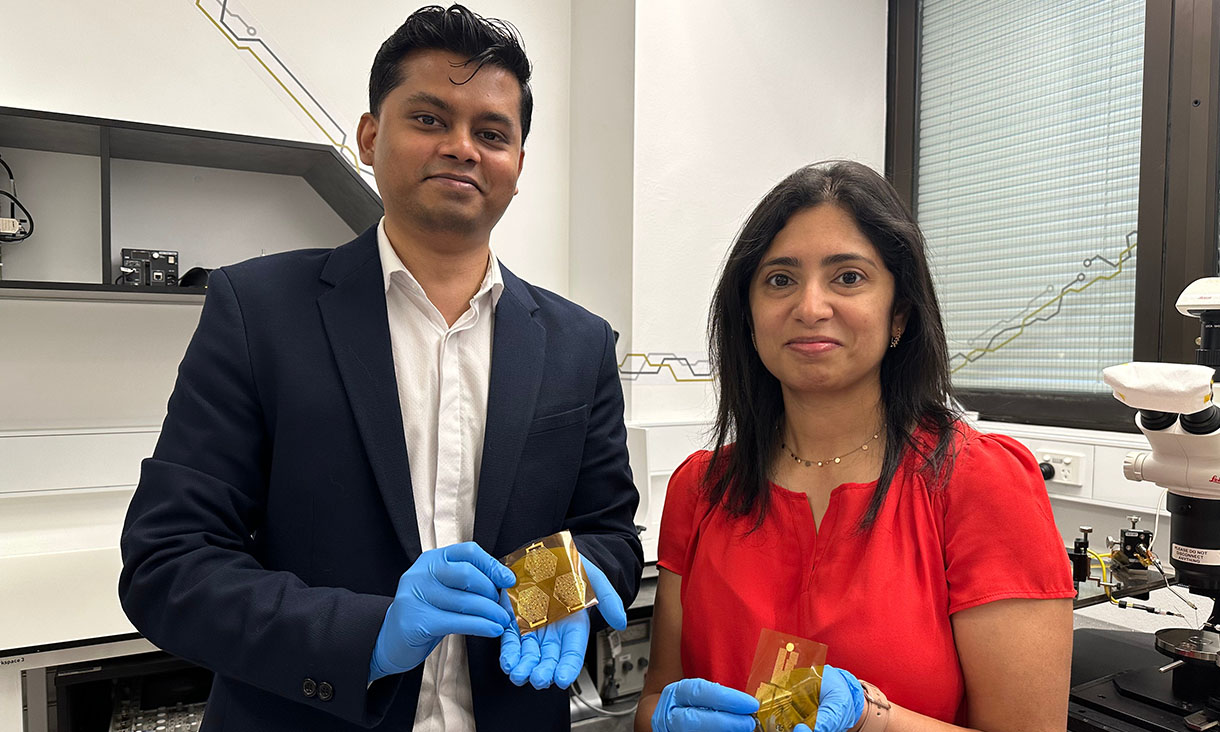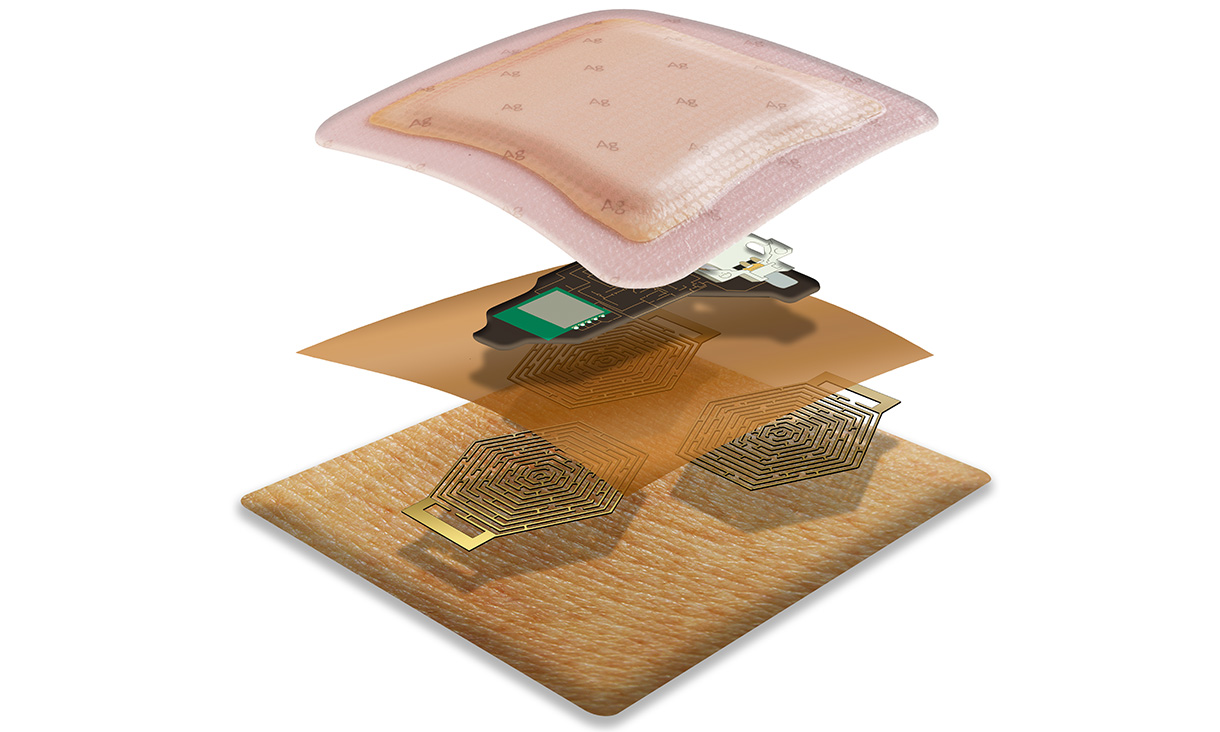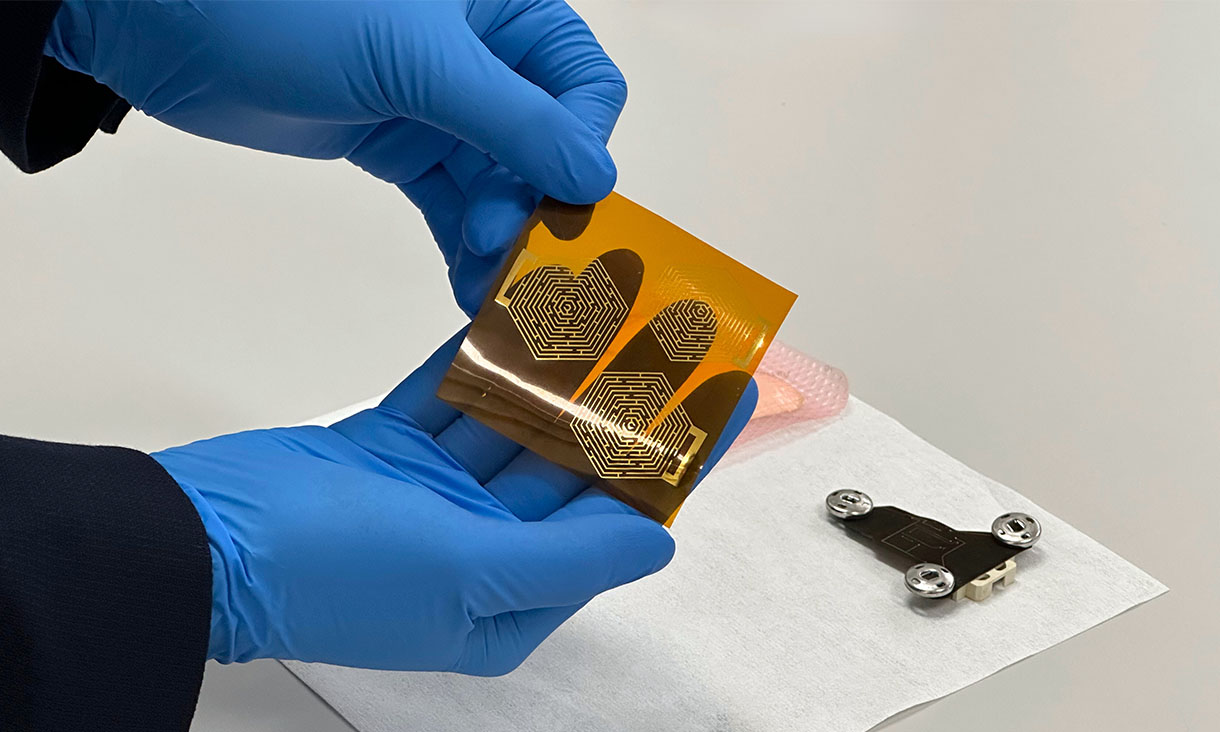A new compact, lightweight, gel-free and waterproof electrocardiogram (ECG) sensor offers more comfort and less skin irritation, compared to similar heart monitoring devices on the market.
ECGs help manage cardiovascular disease - which affects around 4 million Australians and kills more than 100 people every day - by alerting users to seek medical care.
The team led by RMIT University has made the wearable ECG device that could be used to prevent heart attacks for people with cardiovascular disease, including in remote healthcare and ambulatory care settings. While most wearable ECG monitors typically weigh a few hundred grams, the RMIT device weighs only 10 grams.
The latest research is published in AIP Applied Physics Reviews.
 Inventors PhD scholar Peter Elango and Professor Madhu Bhaskaran holding the dry electrodes, which are part of the RMIT ECG device. Credit: Seamus Daniel, RMIT University
Inventors PhD scholar Peter Elango and Professor Madhu Bhaskaran holding the dry electrodes, which are part of the RMIT ECG device. Credit: Seamus Daniel, RMIT University
Lead author PhD scholar Peter Elango from RMIT said heart attacks often occurred with little or no warning, as signals were difficult to spot without continuous monitoring.
"Nearly half of the people who have heart attacks do not realise what's happening until it's too late," Elango said.
"My dream is a world with zero preventable heart attacks."
Elango was one of the top 10 competitors at the recent Falling Walls Lab Australia 2023 Final at the Australian Shine Dome in Canberra, where he gave a pitch about the ECG device.
RMIT has filed an international patent (PCT) application to protect the ECG device that the team developed.
"RMIT is exploring ways to translate the work into a commercial product, and we are in discussions with partners regarding potential licensing opportunities," Elango said.
 An artist's impression of the RMIT ECG device, showing the various layers including a dressing, Bluetooth module and dry electrodes. Credit: Supplied by the research team
An artist's impression of the RMIT ECG device, showing the various layers including a dressing, Bluetooth module and dry electrodes. Credit: Supplied by the research team
Optimising design and comfort
Professor Madhu Bhaskaran, Deputy Director (Research) of the ARC Hub for Connected Sensors for Health at RMIT said the team's focus was on improving the electrode design and materials for increased performance as well as comfort.
"Commercially available wearable ECG devices are usually bulky, heavy and have 12 'wet' electrodes connecting the patient to the device, whereas the RMIT invention can fit in the palm of your hand," Bhaskaran said.
"The device has just three 'dry' electrodes that are almost invisibly thin, can sense even the slightest signals of a heart in distress, and can also be recycled."
Wet electrodes contain a conductive gel to increase cardiac signals, while dry electrodes do not need this gel to operate effectively.
"Wet electrodes are uncomfortable, dry out over time and have been known to cause skin irritation," Bhaskaran said.
The team's experiments tested the RMIT miniaturised three-electrode ECG device's sensing performance against a 12-electrode wearable monitor on the market, demonstrating a comparable level of precision in capturing the heart's electrical activity.
"The RMIT device efficiently captures the heart's activity, whether the user is at rest or experiencing stress," Bhaskaran said.
 The dry electrodes (foreground), dressing and Bluetooth module that form parts of the RMIT ECG device. Credit: Seamus Daniel, RMIT University
The dry electrodes (foreground), dressing and Bluetooth module that form parts of the RMIT ECG device. Credit: Seamus Daniel, RMIT University
Enabling continuous monitoring
ECG data recorded over time helps obtain important diagnostic information concerning the activity of the patient's heart.
To conduct continuous monitoring, Elango said dry electrodes offered some significant advantages.
"Dry electrodes prioritise user comfort, remain durable over time and reduce the likelihood of skin irritation," Elango said.
"The electrodes are also hydrophobic, meaning they don't get wet, and so a user can wear the device while they do activities in the water such as swimming and showering - unlike other ECG monitors.
"These attributes make them ideal for continuous monitoring - a crucial feature for wearable ECG devices."
After extensive experimentation, the team discovered that a hexagonal design was the "winning formula", as it suits the curvy nature of skin and active lifestyles and more accurately captures ECG signals, compared with other wearable devices on the market.
"The device can capture ECG signals even when it is fitted behind a person's neck - ideal for patients in the aged care sector, including for someone with dementia who may remove it from their chest."
But it wasn't all about design aesthetics, Elango said.
"We also dived into the nitty gritty of how different body areas influence ECG measurements. This yielded valuable insights to enhance sensor performance," he said.
"The dry electrodes, which are less than one tenth the width of a human hair, are highly sensitive to the cardiac signals of the user."
Support for the research
This work was performed in part at the Micro Nano Research Facility at RMIT in the Victorian Node of the Australian National Fabrication Facility (ANFF). The team acknowledges the support and funding from the Cooperative Research Centres Projects and ARC Research Hub for Connected Sensors for Health.
RMIT led this research in collaboration with Dr Sherly Elango from Annamalai University in India.
The paper 'Dry electrode geometry optimization for wearable ECG devices' is published in AIP Applied Physics Reviews (DOI: 10.1063/5.0152554).






